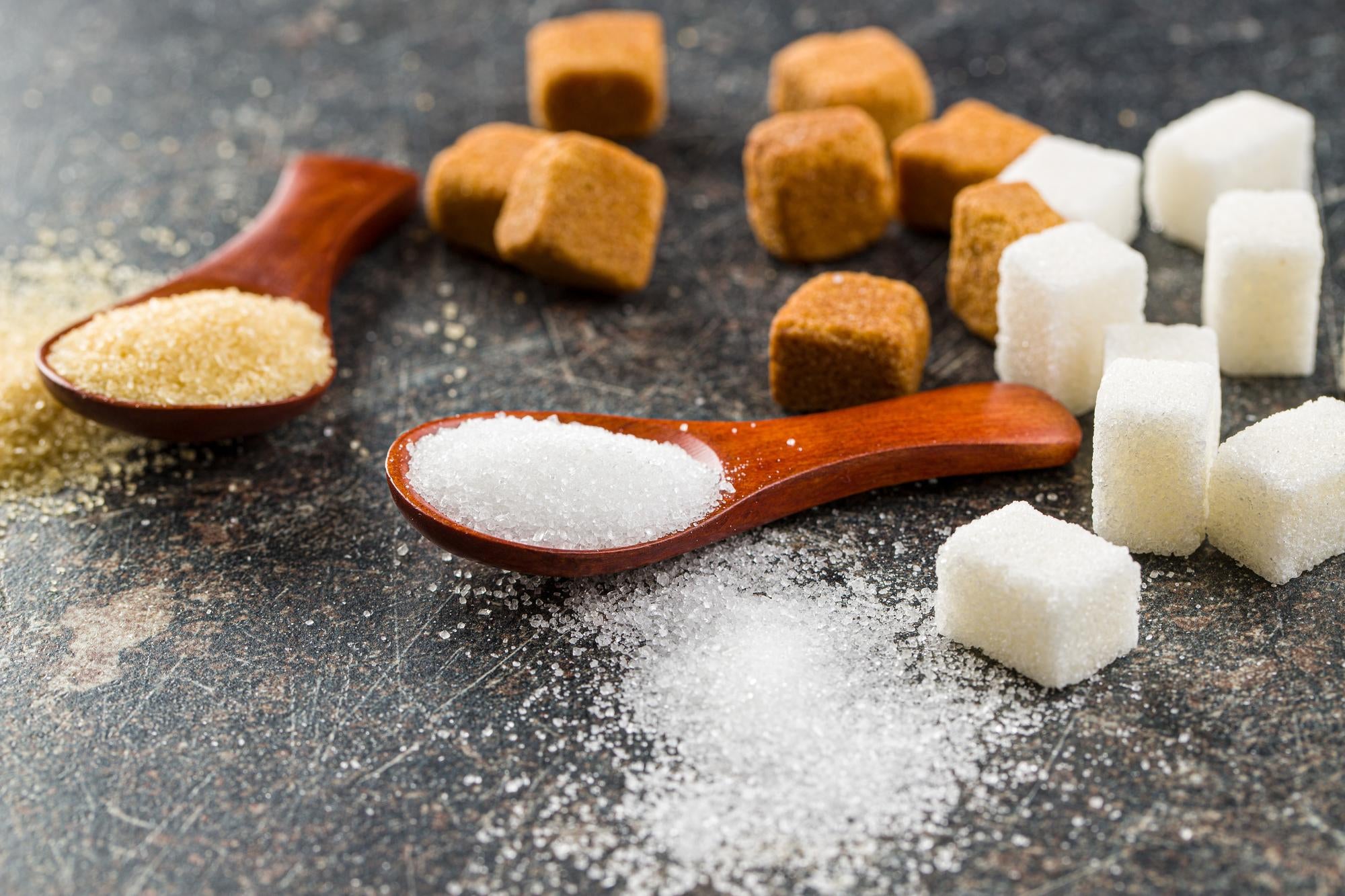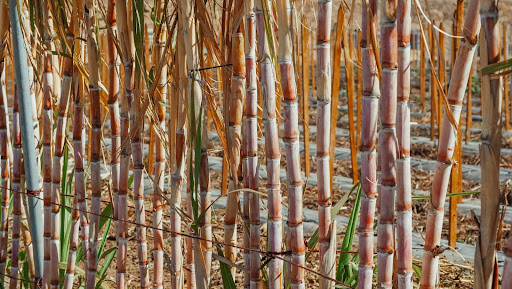Essential handbook to Sugar beet vs sugar cane supply chain
Everything About Sugar Beet Vs Sugar Cane: Which One Supplies Greater Perks and Makes Use Of?
The comparison in between sugar beet and sugar cane provides a nuanced exploration of their corresponding advantages and applications. Each plant has distinctive dietary profiles and expanding conditions that influence their use in numerous industries. As customer preferences change in the direction of much healthier choices, the importance of these 2 resources of sugar ends up being significantly considerable. Understanding their differences can disclose understandings into which may ultimately offer far better in an altering market landscape. What factors will form this continuous discussion?
Introduction of Sugar Beet and Sugar Cane
Sugar beet and sugar cane are two key sources of sugar, each with unique features and benefits. Sugar beet, an origin crop largely expanded in warm environments, is recognized for its high sucrose content, which can vary from 15% to 20%. This crop is usually processed into granulated sugar, molasses, and various other by-products. Its growing enables a much shorter expanding season and less dependancy on tropical climates.
On the other hand, sugar cane flourishes in warmer, exotic regions and is typically regarded for its fibrous stalks, which can yield 10% to 15% sucrose. The handling of sugar cane not only generates sugar yet also causes items like rum and ethanol, making it functional. Both plants add significantly to the global sugar market, with their distinct expanding conditions and handling methods influencing their agricultural and financial relevance. Ultimately, the choice between sugar beet and sugar cane frequently relies on regional environments and market demands.
Nutritional Profiles: Sugar Beet Vs Sugar Cane
The dietary accounts of sugar beet and sugar cane expose considerable differences in their nutrient compositions. Sugar beet tends to offer a higher concentration of nutrients, while sugar cane mainly supplies energy in the type of carbohydrates. In addition, the glycemic index of these two resources varies, affecting their effects on blood glucose levels.
Nutrient Make-up Comparison
When contrasting the nutrient structure of sugar beet and sugar cane, unique differences arise that can affect dietary selections. Sugar beetroots are known for their greater fiber material, supplying roughly 2 grams of fiber per 100 grams, while sugar cane has marginal fiber (Sugar beet vs sugar cane). Pertaining to vitamins, sugar beets supply an array of B vitamins, specifically folate, which supports cellular wellness, whereas sugar cane consists of fewer vitamins on the whole. Additionally, sugar beetroots flaunt a higher mineral content, including potassium and magnesium, essential for various physical features. Sugar cane mostly provides carbohydrates, specifically sucrose, however does not have the nutrient density located in sugar beetroots. These differences highlight the dietary benefits of sugar beets compared to sugar cane in a balanced diet

Glycemic Index Differences
How do sugar beetroots and sugar cane differ in their glycemic index, and what effects does this have for people monitoring their blood glucose levels? Sugar beets usually have a reduced glycemic index (GI) contrasted to sugar cane, which implies they trigger a slower and extra progressive increase in blood sugar levels. This distinction is specifically crucial for people with diabetic issues or those worried regarding blood sugar management. A reduced GI food can help keep steadier energy degrees and lower the threat of insulin spikes. While both sources are mostly made up of sucrose, the differing fiber and nutrient web content in sugar beets may add to their reduced GI, making them a potentially far better alternative for health-conscious customers.
Growing Problems and Geographic Circulation
Although both sugar beet and sugar cane act as essential resources of sugar, their growing problems and geographic circulation differ significantly. Sugar cane thrives in tropical and subtropical climates, requiring warm temperatures, plentiful sunshine, and considerable rains. It is mainly cultivated in countries such as Brazil, India, and China, where these ecological aspects are ideal. Sugar beet vs sugar cane. On the other hand, sugar beet likes pleasant climates, prospering in cooler regions with well-drained soil. Major producers of sugar beet consist of the USA, Russia, and several European nations, where the growing season aligns with cooler temperature levels
The differences in climate requirements cause varying growing practices; sugar cane is commonly grown as a perennial plant, while sugar beet is generally planted yearly. This geographical difference not only influences regional farming economies but also forms local methods associated with sugar production and handling. Comprehending these elements is necessary for examining the benefits and applications of each resource.
Environmental Influence of Sugar Beet and Sugar Cane Manufacturing
While both sugar beet and sugar cane add significantly to worldwide sugar manufacturing, their environmental effects differ considerably. Sugar cane farming usually necessitates big stretches of land and water, bring about logging and environment loss in some regions. Furthermore, using plant foods and pesticides in sugar cane farming can result in soil deterioration and water pollution. On the other hand, sugar beet is typically grown in cooler environments and calls for much less water, which may minimize the strain on neighborhood water sources. Extensive farming techniques connected with sugar beet can likewise lead to dirt erosion and nutrient depletion. The processing of both crops generates waste, however sugar cane has a greater capacity for by-products, such as bioenergy, which can mitigate some ecological influences. Ultimately, the sustainability of each crop mainly depends upon farming practices and regional administration strategies used throughout the manufacturing cycle.

Processing Techniques and Efficiency
Processing methods for sugar beet and sugar cane vary significantly, influencing total performance and return. Sugar beetroots undertake a procedure that consists of cleaning, cutting, and removing juice via diffusion or pushing. The juice is after that cleansed, focused, and crystallized, causing granulated sugar. This technique is usually effective, with a high sugar removal rate.
On the other hand, sugar cane processing entails crushing the cane to extract juice, followed by information and evaporation. The juice is after that steamed to generate sugar crystals. While both methods work, sugar cane processing can be a lot more labor-intensive and time-consuming because of the bigger visit the site range of operations and the demand for a lot more comprehensive equipment.
Sugar beet processing commonly results in a higher sugar material per heap compared to sugar cane, making it a more efficient option in particular areas. In general, the choice of handling technique affects not just the yield yet likewise the financial stability of sugar production.
Applications in the Food Industry
In the food sector, sugar beet and sugar cane offer distinct roles in sweetener manufacturing. Each source provides unique attributes that influence their cooking applications, from baked products to drinks. Recognizing these differences can assist manufacturers and chefs in picking one of the most appropriate ingredient for their demands.
Sweetener Manufacturing Differences
Both sugar beet and sugar cane serve as important sources for sweetener manufacturing, their applications in the food industry vary considerably. Sugar cane is largely linked with generating raw sugar and molasses, which are widely made use of in beverages, confections, and baked products. Its juice is likewise fermented to develop rum. Alternatively, sugar beet is generally refined right into refined sugar, which is favored in the production of granulated sugar and different other sweeteners. The extraction procedure for sugar beet is a lot more straightforward, enabling greater yields of white sugar. In addition, sugar beet's versatility makes it possible for the production of different sweeteners, such as beet syrup. These distinctions highlight the distinct functions each resource plays in satisfying the varied requirements of the food sector.
Culinary Utilizes Contrast
Culinary applications of sugar beet and sugar cane disclose unique preferences among cooks and food suppliers. Sugar cane, commonly perceived as the traditional sweetener, is favored in a range of products, including syrups, molasses, and drinks like rum. Its natural taste matches desserts, marinades, and sauces. Alternatively, sugar beet, used mainly in granulated sugar kind, Bonuses is regularly incorporated right into baked products, candies, and processed foods. Its neutral flavor profile permits it to mix flawlessly right into different dishes. Additionally, sugar beet is acquiring traction in organic and non-GMO markets, interesting health-conscious customers. Eventually, the option between sugar beet and sugar cane depends upon particular cooking applications, flavor choices, and market trends within the food sector.
Wellness Considerations and Customer Preferences
A growing variety of customers are significantly conscious of the health and wellness ramifications related to sugar resources, leading to a keen rate of interest in the benefits of sugar beet versus sugar cane. Both sugar sources have distinct nutritional accounts that might affect consumer choices. Sugar beets have a tendency to consist of slightly a lot more fiber and crucial nutrients, which can appeal to health-conscious people. Alternatively, sugar cane is often regarded as an extra all-natural and less processed alternative, possibly attracting those looking for natural or raw products.
The increasing popularity of alternate sweeteners has triggered customers to look at conventional sugars extra carefully (Sugar beet vs sugar cane). Recognition of excessive sugar usage's wellness threats, such as excessive weight and diabetes, has fueled a demand for openness pertaining to the origins and processing approaches of sweeteners. Eventually, individual choices remain to form the discussion between sugar beet and sugar cane, reflecting a wider pattern towards healthier consuming habits and notified consumerism
Often Asked Concerns
What Are the Historical Uses Sugar Beet and Sugar Cane?
Historically, sugar beet and sugar cane have actually acted as primary resources of sugar. Sugar cane, grown for centuries in exotic areas, provided sugar, while sugar beet arised in Europe during the 18th century, boosting neighborhood sugar production.

How Do Sugar Beet and Cane Affect Citizen Economies?
Sugar beet and sugar cane description significantly effect local economic climates through task production, agricultural performance, and trade. Their cultivation cultivates country growth, supports local organizations, and generates tax obligation profits, ultimately enhancing neighborhood sustainability and financial strength.
Are There Any Kind Of Cultural Significance Distinctions In Between Sugar Beet and Cane?
Social significance varies between sugar beet and sugar cane. Sugar cane frequently stands for exotic heritage and typical practices, while sugar beet is related to agricultural technology and automation, mirroring different regional identifications and historical contexts in their manufacturing.
What Are the Main Vermin Affecting Sugar Beet and Sugar Cane?
The primary parasites influencing sugar beet include aphids and root maggots, while sugar cane deals with dangers from borers and planthoppers. Both plants call for mindful management to mitigate damage and warranty healthy and balanced returns.
How Do Environment Adjustments Influence Sugar Beet and Sugar Cane Cultivation?
Climate changes greatly impact sugar beet and sugar cane growing by altering development conditions, moving insect populaces, and affecting water availability. These factors can minimize yields and affect overall farming sustainability in affected areas.